Pickleball’s skyrocketing popularity has brought it to both indoor courts and outdoor spaces, but not everyone realizes the game changes a bit depending on where it’s played. While the core of the game remains the same, there are subtle differences between indoor and outdoor pickleball that can affect how you approach your game.
Whether you’re a seasoned player or just picking up a paddle, understanding these nuances is key to mastering the sport. From the type of balls used to slight rule adjustments, let’s dive into what sets indoor and outdoor pickleball apart. It’s these little details that could give you the edge in your next match.
Differences in Court Surface
When transitioning from an indoor to an outdoor pickleball setting, players quickly notice the difference in court surfaces. Outdoor courts are typically made from concrete or asphalt, providing a hard, durable surface that can withstand the elements. This means the ball bounces more predictably but faster, placing a premium on reaction time and agility. In contrast, indoor courts are often made of wood or synthetic materials, offering a softer surface. This results in a somewhat slower ball pace, potentially allowing players more time to make strategic decisions.
The surface texture also plays a critical role in how the game unfolds. Outdoor courts often have a rougher texture to aid in water drainage and provide more grip underfoot. However, this can cause the ball to behave differently upon impact, sometimes adding an unexpected spin or altering its trajectory. Indoor surfaces, however, tend to be smoother, leading to a more consistent ball behavior but requiring players to be mindful of their footing to prevent slips and falls.
Another aspect to consider is how weather conditions affect outdoor court surfaces. After a rain, even though the court may appear dry, residual moisture can affect ball bounce and player traction. Wind can also play a significant role outdoors, affecting both the ball’s path and player movement. Indoor courts, shielded from the elements, offer a controlled environment, meaning players only need to adjust to the game, not the weather.
Players should also be aware of how the color of the court surface can affect visibility. Outdoor courts are usually a light color to reflect sunlight and minimize heat. This can influence how well players see the ball, especially during the bright hours of the day. Indoor courts might use a variety of colors, but since lighting is controlled, visibility is less of an issue but still worth noting for those sensitive to light contrasts.
Adapting to different court surfaces requires players to adjust their strategies and sometimes their equipment. For example, shoes with different grip levels may be necessary to maximize performance and safety on varying surfaces. Players who can quickly adapt to these differences will enjoy an advantage, mastering the nuances of pickleball in any setting.
Type of Balls Used
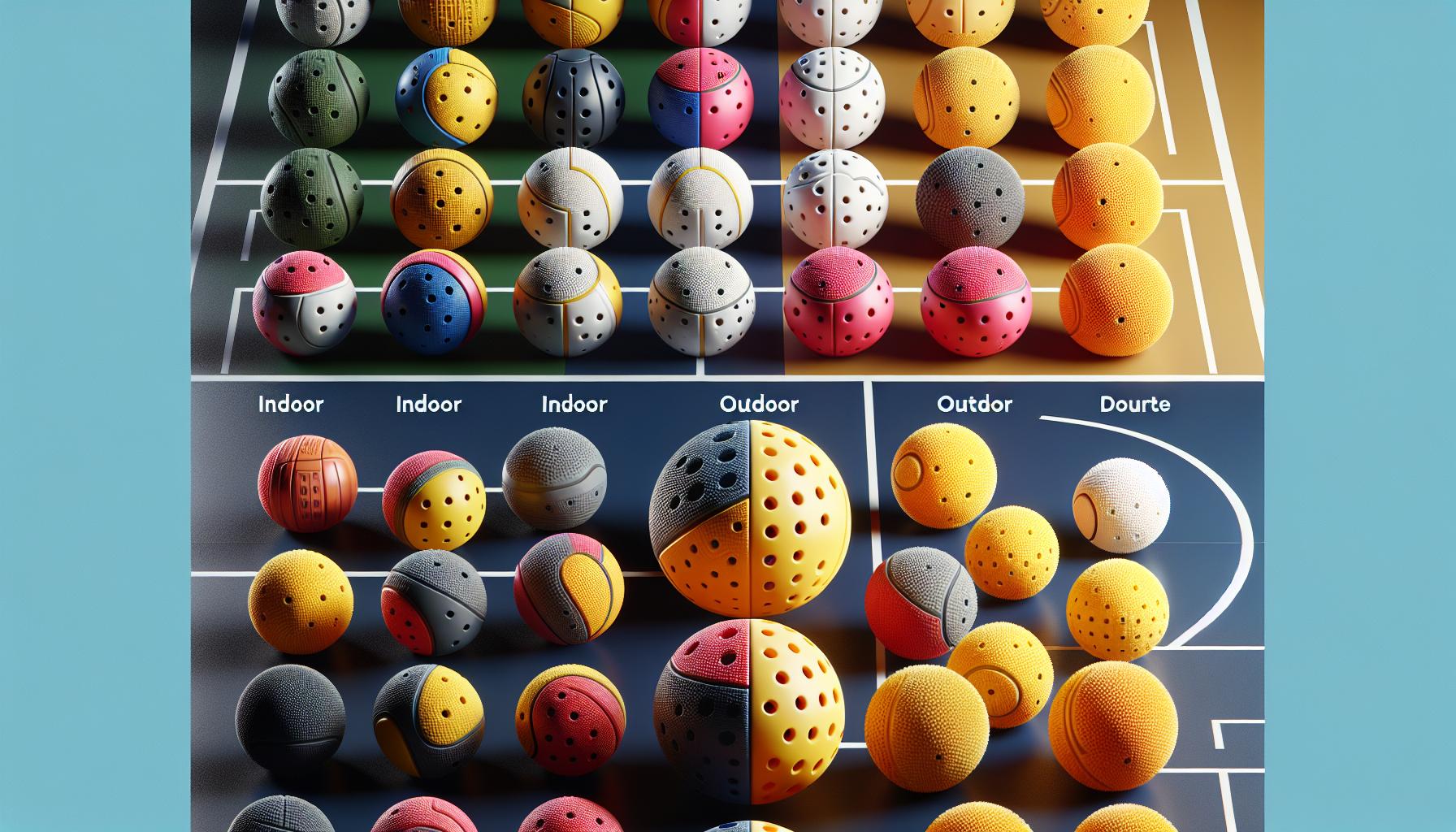
In the game of pickleball, the type of ball used significantly varies between indoor and outdoor play. This distinction not only affects the style and speed of the game but also necessitates players to adapt their strategies accordingly.
Outdoor Pickleball Balls
Outdoor pickleball balls are designed to withstand rough playing conditions. They are typically made from a harder plastic and have a smooth surface with 40 small holes. This design helps the ball to move faster and more predictably in windy conditions or when it comes into contact with uneven surfaces such as concrete or asphalt courts. The durability of outdoor balls allows them to maintain their bounce and shape over time, even after extensive play on hard surfaces.
Indoor Pickleball Balls
Indoor pickleball balls, on the other hand, are softer and feature a larger number of holes, around 26 to 40. The larger holes are meant to slow the ball down, providing a different gameplay experience. Made from a softer plastic, these balls are less durable than their outdoor counterparts but offer better control and slower play, which can be ideal for strategic positioning and longer rallies on indoor courts. Indoor balls are best suited for gym floors or other smooth, flat surfaces where wind and weather conditions do not interfere with play.
Selecting the Right Ball
It’s crucial for players to select the right type of ball for their playing environment. The choice can greatly affect how the game is played and can even influence the outcome of matches. Players should consider:
- Surface Type: Hard surfaces favor outdoor balls, while smooth, indoor surfaces work better with softer, indoor balls.
- Wind Conditions: Outdoor play usually necessitates using a ball designed to handle wind interference.
- Style of Play: Those looking for faster gameplay might prefer outdoor balls even when playing indoors, depending on local rules.
| Type | Number of Holes | Surface Recommended |
|---|---|---|
| Outdoor | 40 | Hard |
| Indoor | 26 to 40 | Smooth |
Lighting and Environmental Factors
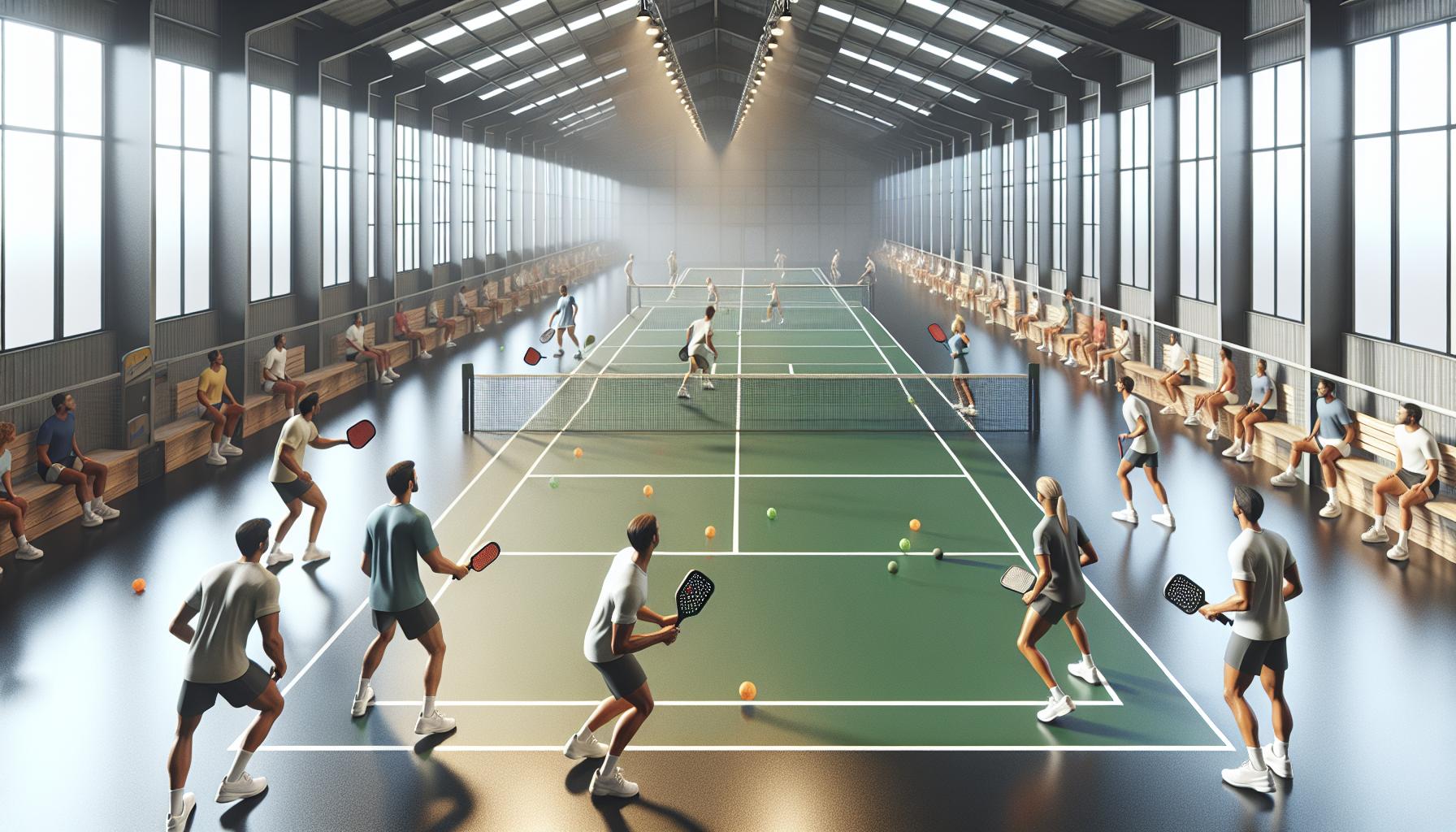
When transitioning between indoor and outdoor pickleball, players often overlook lighting and environmental factors, yet these play a pivotal role in both the enjoyment and performance aspects of the game. Outdoor pickleball naturally relies on sunlight, which can introduce variables such as glare and shadows, potentially affecting players’ visibility and accuracy. On the other hand, indoor courts offer consistent, controlled lighting, minimizing these visual disruptions but requiring players to adjust to artificial light sources which can be a challenge for some.
The impact of sunlight and shadows cannot be overstated. Players frequently find themselves adjusting their stance and gameplay to account for the position of the sun, especially during early morning or late afternoon matches when the sun can be directly in a player’s eyes. Sun glare can turn a routine shot into a challenging endeavor, emphasizing the need for proper eye protection and situational awareness.
Temperature and weather conditions are additional factors that distinguish indoor and outdoor play. Outdoor games are subject to varying temperatures, wind, and even precipitation, all of which can affect ball movement and player comfort. Wind, in particular, requires players to adapt their serving and ball placement strategies, as gusts can drastically alter a ball’s trajectory. The temperature contrasts between indoor and outdoor environments also necessitate different warm-up routines and attire choices to maintain optimal performance and avoid injury.
Indoor courts, shielded from the whims of weather, offer a consistent environment that many players appreciate. The absence of wind and direct sunlight allows for a game that relies more on skill and less on adapting to external conditions. However, indoor play comes with its own set of environmental considerations. Air conditioning and heating systems can influence both the playability of the ball and the physical comfort of the participants. Additionally, the type of indoor lighting can affect players’ depth perception and visual acuity, making some indoor facilities more preferable than others.
Despite these differences, both settings offer unique challenges and advantages. Outdoor play hones adaptability and strategy under varying conditions, while indoor play enables refined technique in a controlled environment. Players are encouraged to practice in both settings to develop a well-rounded skill set and appreciate the nuances of pickleball played under different environmental conditions. By understanding and adjusting to these lighting and environmental factors, players can improve their game and enjoy pickleball year-round, regardless of the venue.
Rule Adjustments for Indoor vs. Outdoor Pickleball
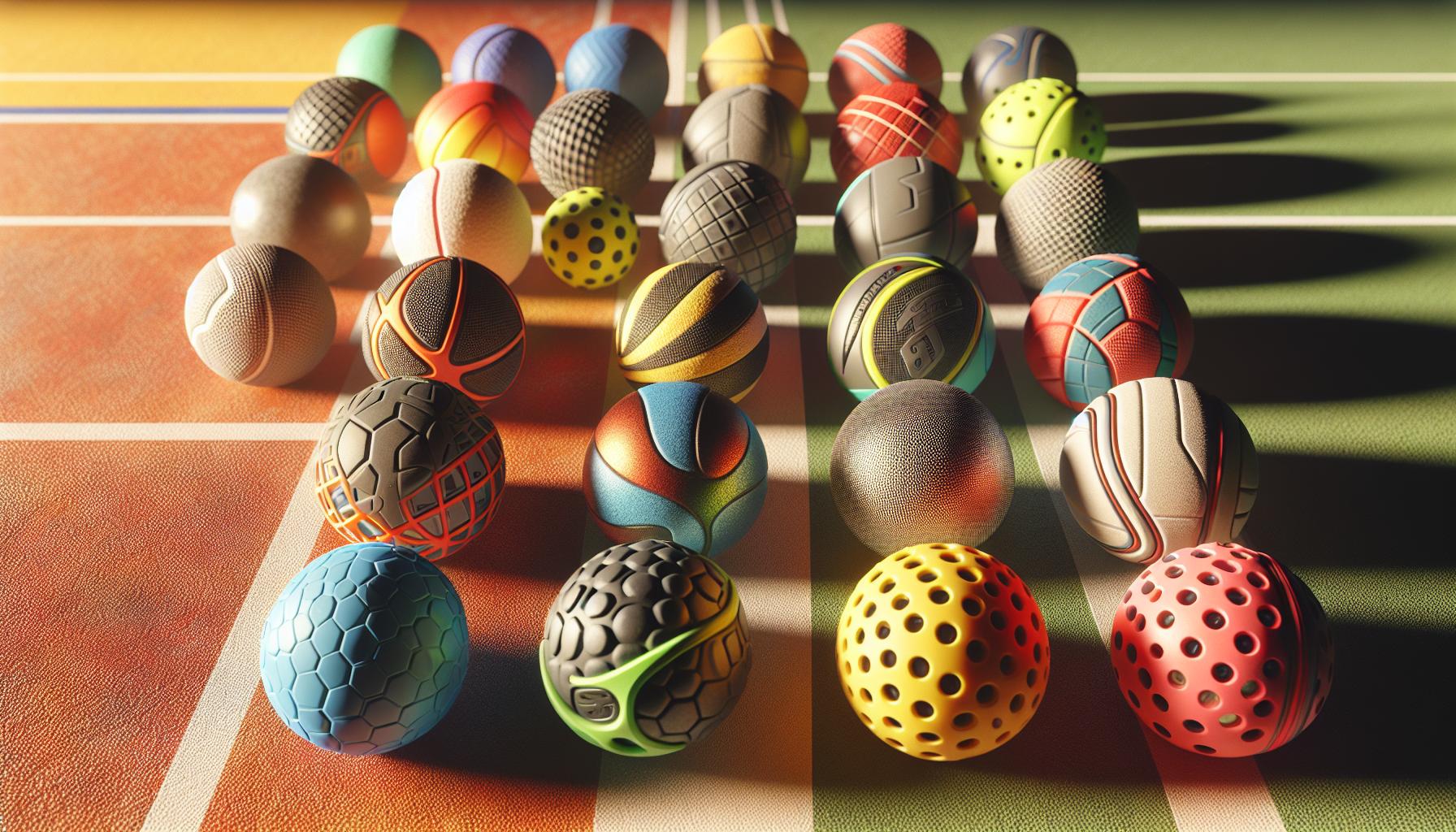
Pickleball, a sport that has taken enthusiasts by storm, can be played both indoors and outdoors. Each setting offers its unique challenges and thrills. However, what many players might not realize is that transitioning from an outdoor to an indoor court, or vice versa, isn’t just about adjusting to different playing surfaces or environmental elements. There are specific rule adjustments and considerations that come into play, tailoring the game to its environment effectively.
Surface and Equipment Adaptations stand out as the most significant differences. Indoor courts typically feature a smoother surface compared to the rougher, often concrete outdoor courts. This difference affects the ball’s bounce and speed, leading to adjustments in playing style and strategies. Additionally, balls used indoors are usually softer to accommodate the less abrasive surface, which impacts how players serve and return shots. Consequently, serving rules might be slightly altered to account for the ball’s different behavior. It’s not just the balls and surfaces that see changes; lighting conditions necessitate different colored balls for optimal visibility, whether indoors or out.
When it comes to court dimensions and lines, there’s no difference between indoor and outdoor courts, adhering to the standard size. However, the indoor game often requires more precise line calls due to closer quarters and potentially less contrast between the court lines and the floor color. This situation demands heightened awareness and sometimes quicker reflexes to keep up with the pace of play.
Noise levels in indoor courts can significantly affect communication among players. Indoors, where sounds echo and reverberate, players might find it challenging to hear calls or communicate with partners. Some local rules have adapted by allowing for hand signals or implementing noise reduction methods, but it’s an adjustment every player needs to anticipate.
| Aspect | Indoor | Outdoor |
|---|---|---|
| Ball Type | Softer, designed for smooth surfaces | Harder, designed for rougher textures |
| Surface Type | Smooth, synthetic materials | Rough, often concrete |
| Lighting and Colors | Artificial lighting; color of ball varies | Natural light; specific colors for visibility |
| Communication | Hand signals or louder calls due to echo | Normal voice levels; less concern for noise |
Strategies for Indoor vs. Outdoor Play
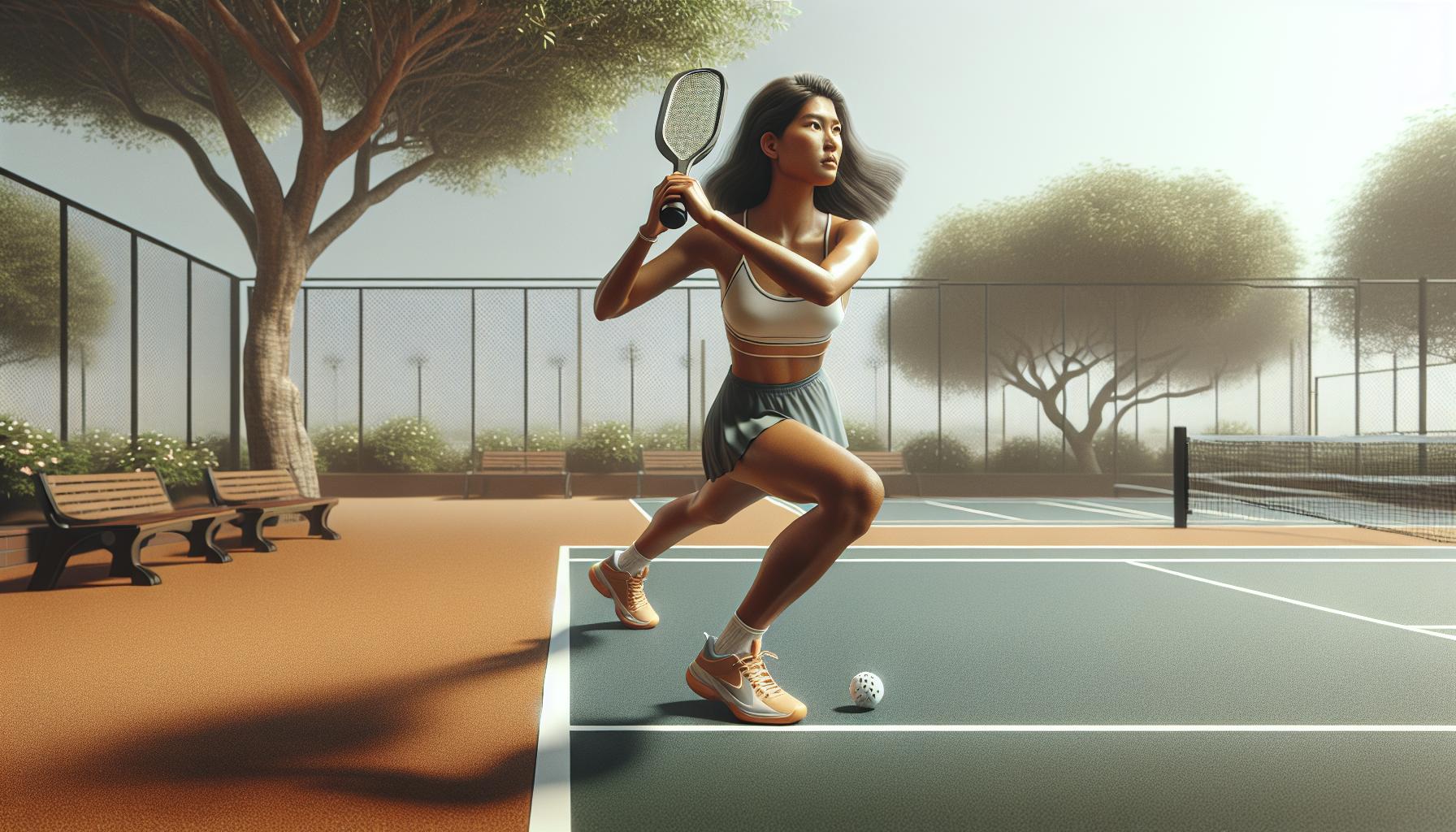
When transitioning between indoor and outdoor pickleball play, players find that not only do the rules and equipment change, but so too must their strategies. Understanding these nuances can give a player a competitive edge, whether they’re facing the calm, controlled environment indoors or braving the unpredictable elements outside.
Adapting to Different Playing Surfaces
The surface of the court significantly influences game strategy. Indoor courts typically feature a smoother finish, which affects how the ball bounces and moves. Players need to anticipate faster ball speeds and less skid, adjusting their reflexes and shot selections accordingly.
- Indoor Strategy:
- Focus on quick volleys and use the walls to your advantage
- Employ softer shots as the ball doesn’t bounce as high
- Outdoor Strategy:
- Prepare for variable ball bounces due to wind and other elements
- Incorporate lobs and deep shots to move opponents around the court
Dealing with Environmental Factors
Outdoor play introduces variables such as wind, sun, and changing temperatures, directly impacting gameplay and strategies. Players must be adaptable, changing their approach based on current conditions. It’s not just about battling an opponent but also mastering the environment.
- Indoor Strategy:
- Communication is key in a louder, echo-prone setting
- Develop a strong serve that’s less affected by the lack of wind
- Outdoor Strategy:
- Use the sun to your advantage by serving and volleying from positions that put the sun at your back
- Adjust serving techniques to account for wind direction and speed
Emphasizing Different Skills
Depending on the setting, certain skills become more prominent and advantageous. Indoor games often require precision and quick decision-making due to the faster pace of play and less external interference. Outdoors, players benefit from adaptability, powerful shots that combat the wind, and strategic placement to exploit the elements and court dimensions.
- Indoor Emphasis:
- Sharpen quick reflexes for rapid volleys
- Master precise shot placement to outmaneuver opponents in tighter spaces
- Outdoor Emphasis:
- Develop a versatile serve that can be adapted to wind conditions
- Enhance your ability to read and use environmental factors to your advantage
Conclusion
Mastering pickleball means more than just honing your skills; it’s about adapting to where you’re playing. Whether it’s the controlled environment of an indoor court or the unpredictable nature of an outdoor setting, understanding the nuances can significantly impact your game. Remember, it’s not just about how well you play but also how well you adjust your strategies to fit the environment. So next time you pick up a paddle, think about where you are and let that guide your game plan. With this mindset, you’ll be ready to face any challenge, indoor or outdoor.

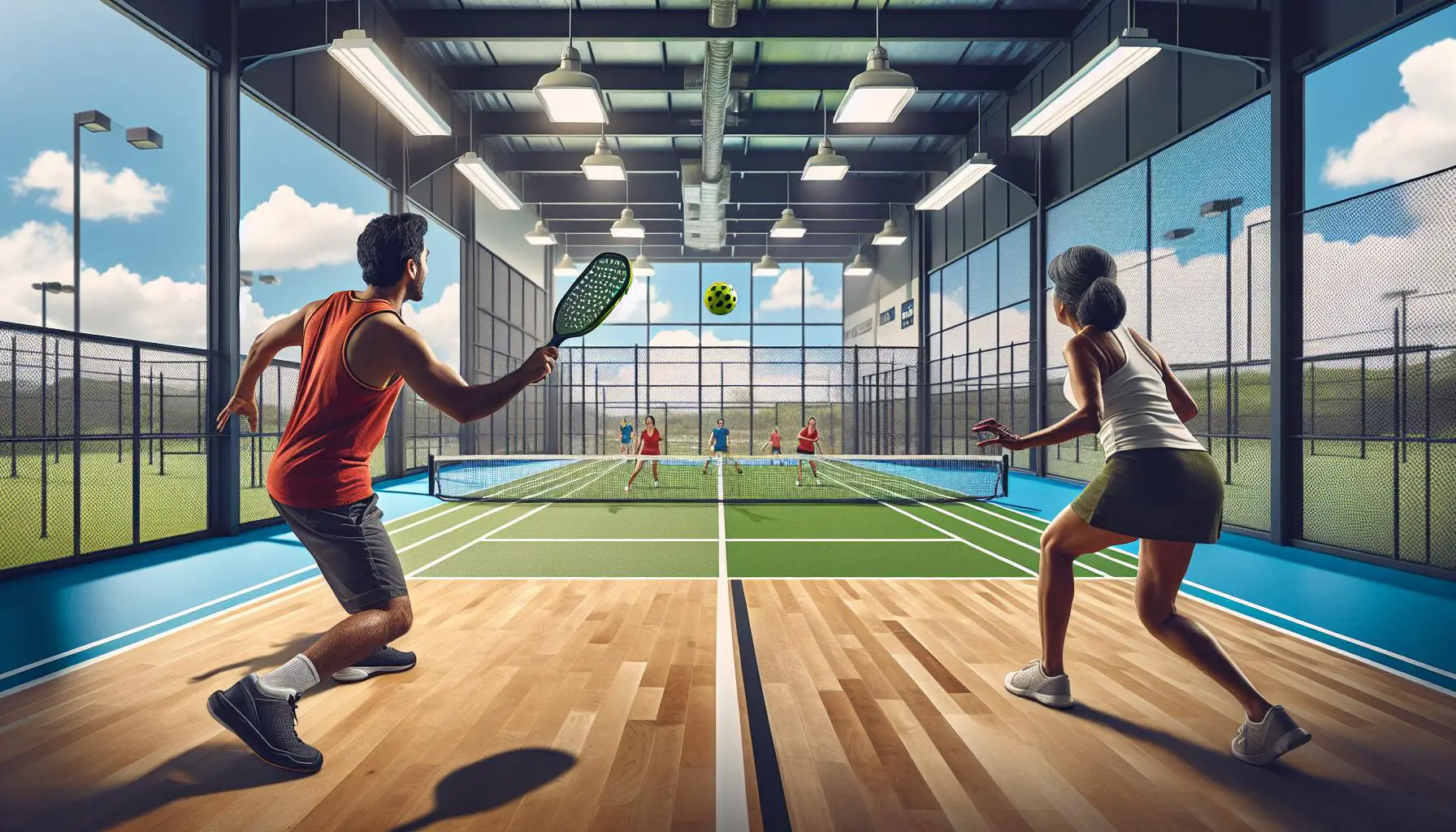









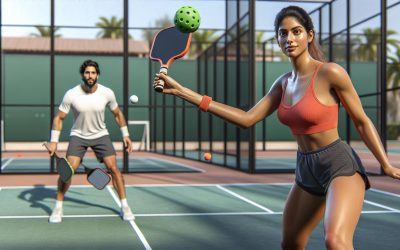
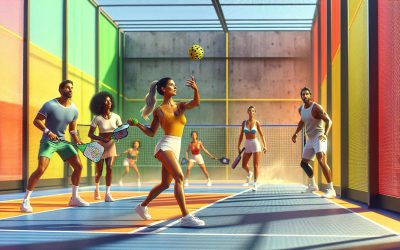
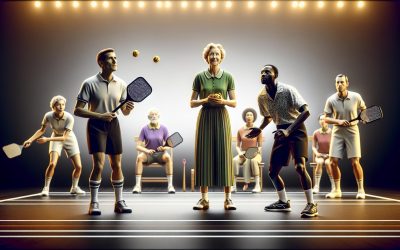
0 Comments